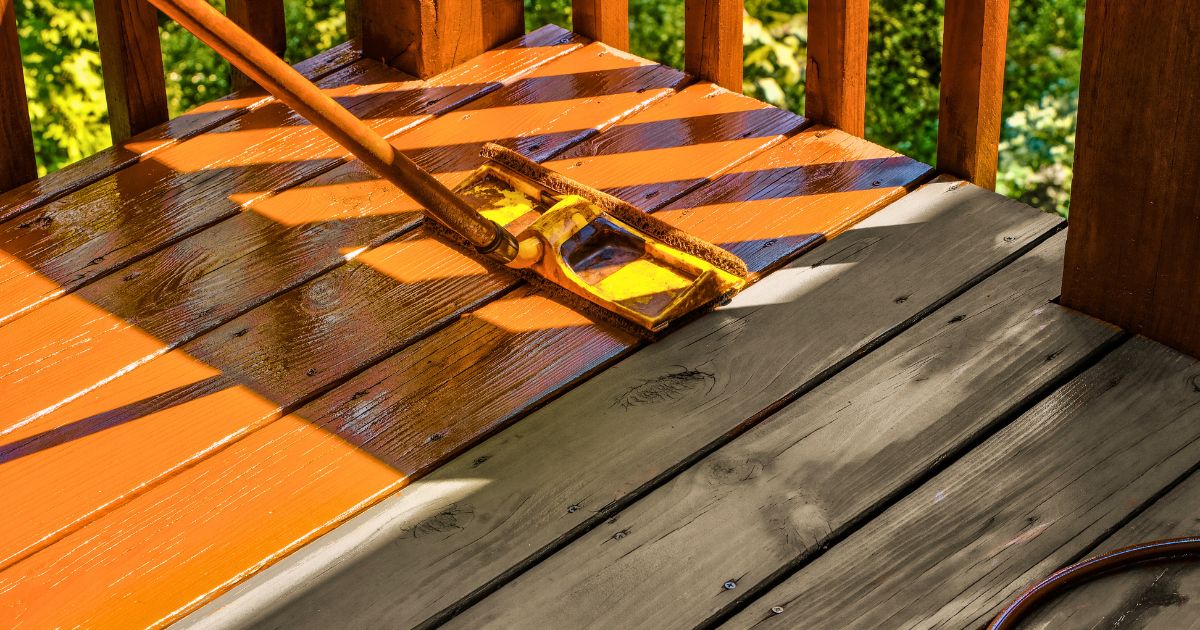3 Types of Stains That Make Your Deck Look Better
March 24, 2024
Adding a deck creates invaluable outdoor living space for relaxing, dining, or entertaining. However, building or renovating a deck requires careful planning and material selection to create your ideal outdoor retreat. This comprehensive guide covers the full process, from planning and design to material selection, construction, maintenance, and more. Follow these tips to build your dream deck.
When starting a new deck project, layout and size are two key early considerations. Think about how you will use the space and how the deck integrates with your home's architecture.
Here are the recommended layout guidelines:
When designing your deck, consider your intended use of the space. Will it be for intimate family gatherings or frequently hosting large parties? This will inform decisions about shape, footprint, amenities like fire pits or pergolas, and more.
Irregular shapes beyond basic rectangles add visual interest but often cost more to build. Partnership with an experienced deck builder is key to successfully constructing unique layouts and geometries.
Composite decking provides a versatile, splinter-free alternative to wood with added durability. Quality composites blend plastic and wood fibers with realistic grain patterns and rich colors. Popular brands like Trex and TimberTech offer fade and stain warranties.
You can match the decking material or use a complementary material like steel or aluminum for railings. Most railings are 36 inches high. This satisfies the code while allowing pleasant seated views. Wrought iron is also elegant but costs more than metal or composite options.
Research permit requirements before finalizing plans. Many areas require permits for decks over 200 square feet. Your local zoning office can provide guidelines to ensure code compliance.
When selecting decking boards, you have several attractive options to consider. Key factors include durability, maintenance needs, comfort underfoot, and overall cost.

Evaluate options based on low-maintenance benefits, durability, comfort, and overall aesthetic. Composite and PVC offer low-maintenance perks, while wood provides natural, timeless beauty.
Once you've designed your dream deck, it's time to tackle bringing your vision to life. For most homeowners, it's wise to partner with a professional deck builder to handle the nuances of code-compliant construction.
Attempting extensive DIY construction can be challenging, especially for inexperienced homeowners. Mistakes may lead to safety issues and violations. Permitting and inspection requirements assure you that safety codes were properly followed.
Here's an overview of the basic steps:

Building a DIY wood deck is feasible for experienced do-it-yourselfers ready to pull permits, design footings, and safely operate power tools. But hiring a pro is often advisable.
Regular cleaning and sealing keep decks looking fresh and prevent long-term damage. In addition to maintenance, inspect decks yearly and make repairs immediately to protect structural integrity.
Here are care tips for composite and wood:





Consistency is key for proper deck care. Schedule seasonal power washing and inspections. Keep necessary maintenance products stocked.
Composite and natural wood both have pros and cons. Quality composites resist weathering and need less maintenance than wood. Trex and TimberTech composites often have stellar limited lifetime warranties covering issues like mold, staining, and decay. But despite realistic faux woodgrain patterns, some homeowners still prefer the unparalleled warmth and beauty of real hardwoods.
Ultimately, composites and PVC require less long-term maintenance, especially frequent sanding and staining. They also resist weathering and hazards like splintering bare feet. But richly grained woods like ipe, redwood, and cedar provide treasured natural elegance. Consider your priorities, like lifestyle, maintenance tolerance, and budget. Both materials can provide enduring, beautiful decks with proper installation and care. An experienced builder is key.
Installing a custom deck creates invaluable outdoor living space for your family for decades. You can build your ideal deck and outdoor retreat with smart planning based on your needs and priorities. Research material options, codes, permits, and reputable builders. Then, develop a diligent maintenance plan to protect your investment. Follow these best practices for constructing and caring for your dream deck.
Many areas require permits for decks over 200 square feet. Check local regulations, as requirements vary regionally.
The average professional wood deck costs $4,000-$12,000 based on size, materials, access, and design intricacy. Multi-level decks with amenities often exceed $30,000.
Properly installed and maintained, composites last 25-30 years on average. Some last over 50 years. Trex offers lifetime warranties with product registration.
For optimal protection, experts recommend staining wood decks every 2-3 years to maintain rich tones. Always properly clean and lightly sand beforehand.
Yes. Use the widest nozzle at lowest pressure and keep the washer at least 8 inches away. Never use solvents or abrasives. Allow proper drying after washing.
3 Types of Stains That Make Your Deck Look Better
March 24, 2024
April 11, 2024
Guide to Hot Tub Deck Framing: Tips and Considerations
March 27, 2024
Inexpensive Deck Skirting Ideas
April 8, 2024